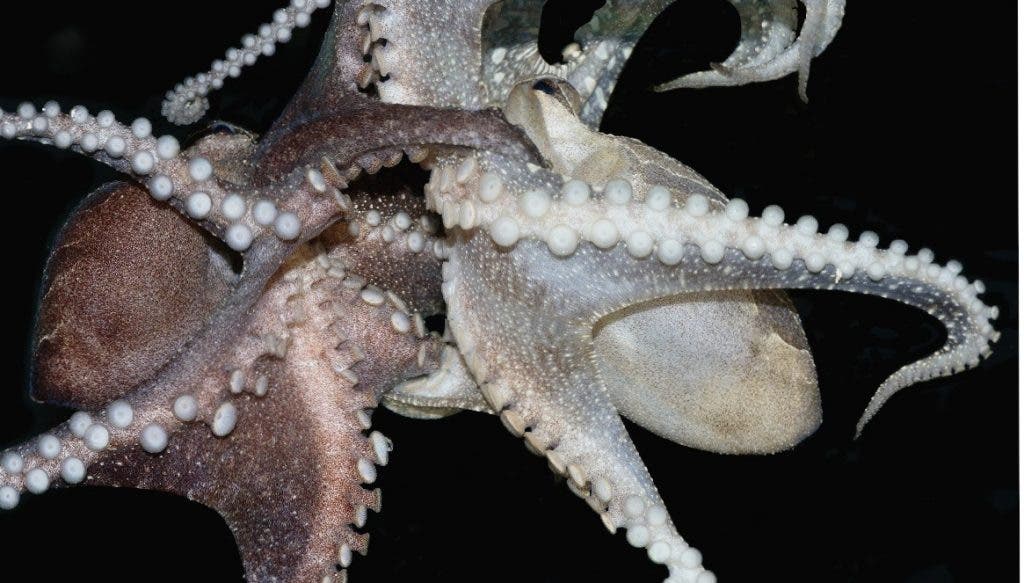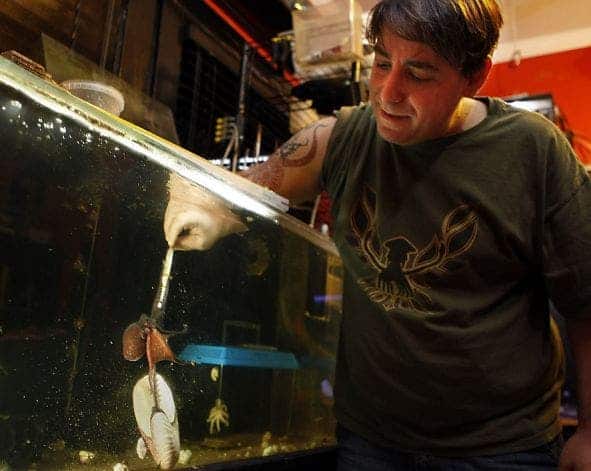Octopuses are like aliens and there are few creatures weirder than these eight legged critters. They survive freezing waters, perceive light through their skin, are masters of camouflage and can do many other things, some still oblivious to science. One uncanny feature of octopuses is their mating behavior or social order. Most octopus species mate at a distance, with the male using its reproductive arm to reach the female’s mantle. They have to do this to avoid being cannibalized by the female. Either way, once the job is done, the male dies while females only lives a little longer, just enough to lay the eggs. That’s the peak of both the octopus’ sex and social life. Besides a few instances, octopuses live their lives in isolation, alone in some shell or barren rock. However, there’s one octopus that seems to be totally different, even human-like: the Larger Pacific Striped Octopus.

If you think the name lacks character, it’s not the octopus’ fault. It was first discovered decades ago off the coast of Panama by Arcadio Rodaniche, but because at the time scientists didn’t believe it was distinct enough to be considered a new species the name stuck. When Rodaniche first studied the octopus he reported some weird behavior like the fact that the males and females actually stay and live together even after the mating is done. Now, many years later, these findings have been confirmed by a team of biologists from University of California, Berkeley.
After carefully studying multiple specimens of the Larger Pacific Striped Octopus, Rich Ross, a senior biologist at the California Academy of Sciences, found even more interesting tidbits about this peculiar species. Even for octopus standards.
Unlike the other 300 or so species of octopus, the Larger Pacific Striped Octopus actually seems to have at least a shade of social life. But first, let’s talk about mating. To copulate, the male and female join their beaks together, which actually sounds romantic. The researchers speculate this behavior has evolved so that the brooding female can mate while still guarding her eggs. Also, it also helps the male increase his chances of success since this way only one male can mate with the female. In most octopus species, the female mates with multiple males at a time.

While most octopuses die right after they finish laying the eggs, the Larger Pacific Striped Octopus females lives longer and can produce multiple batches. They even live to see their young hatched and take care of them for up to eight months. During this time, the male sticks around and shares the den with the female. The two share food beak to beak and mate every day. They also share chores, as researchers note both sexes regularly clean up their den of excess food or waste. Findings appeared in PLOS ONE.
“It’s the most amazing octopus that I’ve ever gotten to work with,” Ross said.
Oh, remember I mentioned earlier that octopus seem like alien? Well, some scientists agree. US and Japanese scientists just recently sequenced the first octopus genome and came to some startling findings. They sequenced the DNA of the California two-spot octopus, but the findings can be easily extended to other species. Some key findings: its genome is huge for its size; despite being an invertebrate, the octopus’ genome has a family of genes involved in setting up brain circuits in vertebrates;


